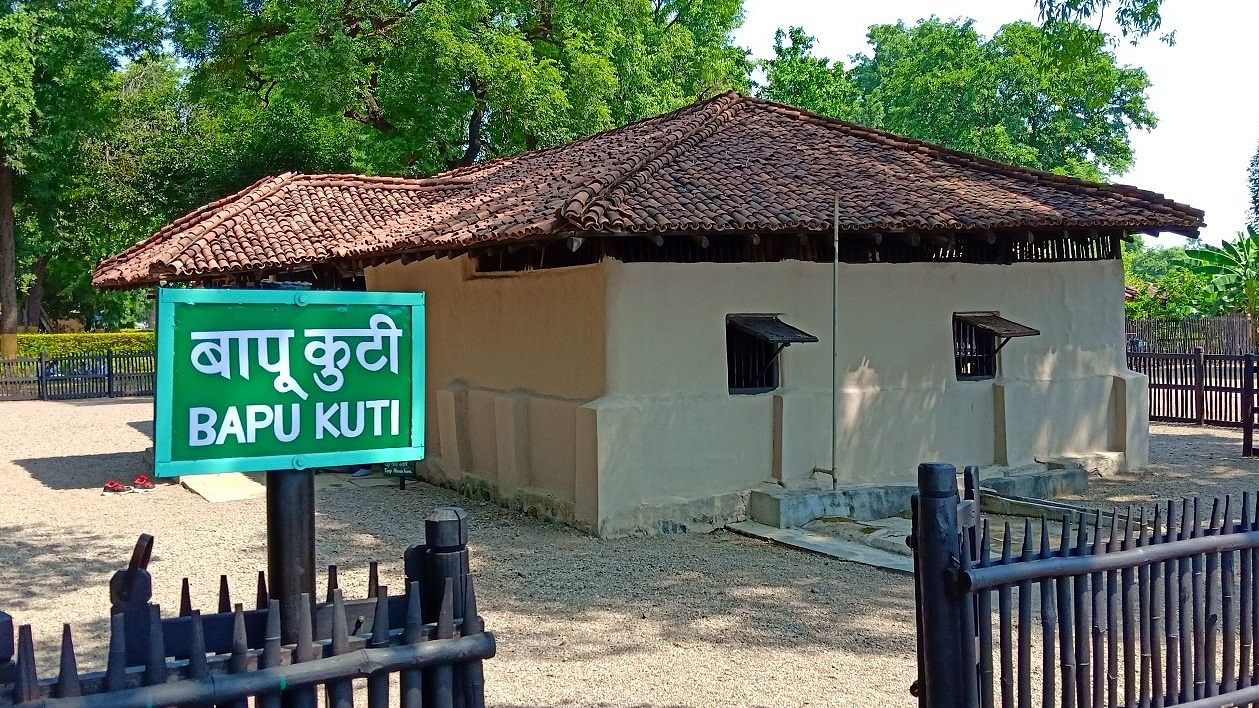
Sevagram, Wardha
Credit: DH Photo
Mumbai: The central Indian town of Wardha housed the residence of Mahatma Gandhi from 1936 to 1948 till his death. Post-Independence, it has been a Congress bastion for several years. The BJP won the seat twice in succession in 2014 and 2019, defeating Congress candidates because of the 'Narendra Modi wave'.
However, 2024 will be the first time that Congress would not be putting up a candidate in Wardha as during the seat-sharing arrangements, the seat went to Sharad Pawar-led NCP (SP).
In Wardha, the BJP has nominated Ramdas Tadas for the third time.
On the other hand, a two-time Congress MLA from Arvi in Wardha district, Amar Kale, has joined the Pawar-led party and is the official candidate of the NCP (SP) for this Lok Sabha seat in Vidarbha region of Maharashtra.
BJP’s Deputy Chief Minister Devendra Fadnavis took a dig at Congress and Pawar. “We must thank Pawar Saheb…what we could not do, Pawar Saheb did…(by) removing the Congress symbol,” Fadnavis said addressing a rally in the Vidarbha region.
In 2014 and 2019, Tadas defeated Congress nominees Sagar Meghe and Charulata Tokas.
The Sevagram Ashram in Wardha was the residence of Gandhiji from 1936 to his death in 1948. Gandhiji decided to make a village in Central India his headquarters and he came to Wardha in 1934, at the invitation of Jamnalal Bajaj, to establish Sevagram, the village of service.
The Bapu Kutir, the small hut Mahatma Gandhi used to stay in Sevagram is the centre of attraction, is visited by students, educationists, researchers, tourists and Gandhians.
The Father of the Nation had spent over a decade’s time of his life in Sevagram.
The Sevagram, spread over 400 acres is run by five institutions, namely Sevagram Ashram, Nai Talim Samiti, Mahatma Gandhi Seva Sangh Akhil Bharatiya Seva Sangh and Kasturba Health Society.
Amongst the most important items here are the small statue of three monkeys made of china clay - one covering its eyes, the second, its mouth, and the third, its ears.
When Gandhi started his padayatra in 1930 from Sabarmati Ashram to Dandi for the Salt Satyagraha, he had decided not to return to Sabarmati till Independence for India was attained.
For the Satyagraha, he was jailed for more than two years. On his release he spent some time travelling before he began staying in the Wardha village.
Gandhiji was 67 years old when he came to Sevagram. From then on, Sevagram has become an inspiring place. Many decisions on important national matters and movements were taken at Sevagram.
In 1952, Shriman Narayan Agarwal (Congress) won the polls, while Kamalnayan Bajaj won the elections in 1957, 1962 and 1967 while Jagjivanrao Kadam won in 1971 and Santoshrao Gode (1977).
Late Congressman Vasant Sathe won the three successive polls in 1980, 1984 and 1989. CPI’s Ramchandra Ghangare won the elections in 1991. In 1996, the BJP won the seat for the first time in 1996. The seat came to the Congress kitty again with Datta Meghe and Prabha Rau winning in 1998 and 1999. In 2004, BJP’s Suresh Waghmare won the seat followed by Datta Meghe in 2009.